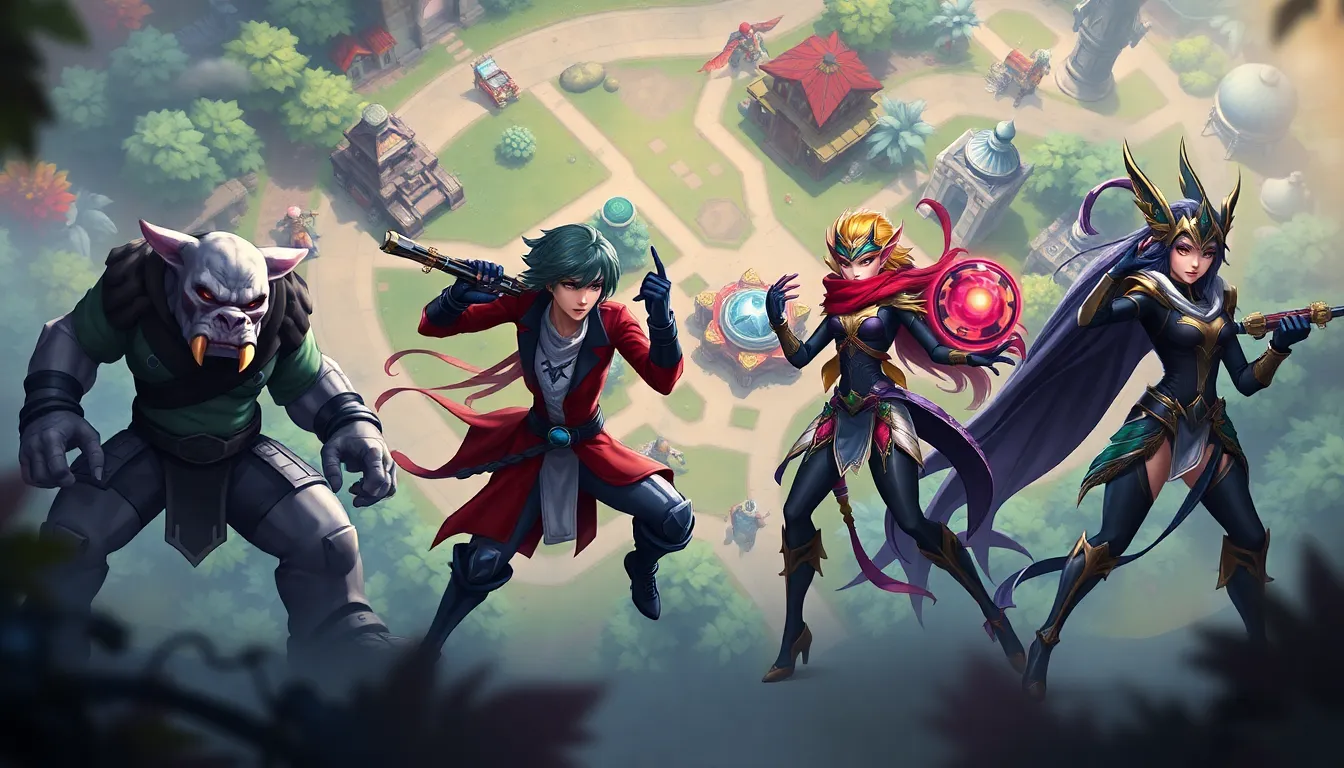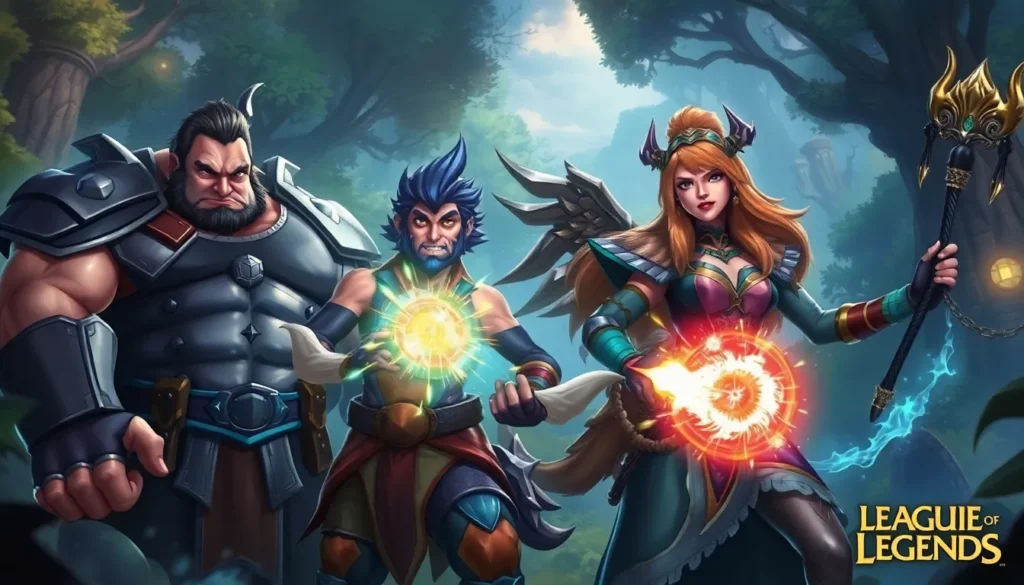Table of Contents
ToggleIn the colorful world of League of Legends, champions aren’t just characters; they’re the heart and soul of epic battles. Each one brings a unique flair, whether it’s a flamboyant spell-caster or a stealthy assassin lurking in the shadows. Choosing the right champion can feel like picking a favorite child—impossible and fraught with drama.
Overview of LoL Champions
Champions in League of Legends embody various roles and abilities that shape the gameplay experience. Each champion boasts unique skills that contribute to the overall strategy of a match. Players select their champions based on personal preferences, catering to play styles such as tank, support, damage dealer, or mage.
Approximately 160 champions exist, each fitting into these categories based on gameplay mechanics. Tanks often absorb damage, while damage dealers focus on eliminating opponents quickly. Support champions aid teammates, enhancing their capabilities. Mages typically deal damage through spells.
Choosing a champion involves understanding their strengths and weaknesses in relation to team composition. Compounding this complexity, the synergies between champions can greatly influence match outcomes. For example, a team featuring coordinated crowd control champions can secure objectives more efficiently.
Adaptability is key; players frequently adjust their champion selection based on opposing team compositions. Understanding the current meta also impacts champion viability. Competitive play highlights the significance of champion mastery, where top players often specialize in a select number of champions to maximize their effectiveness.
Regular updates and balance adjustments keep the game dynamic, introducing new champions or reworking existing ones to maintain freshness. This evolution fosters ongoing engagement within the community, as players explore different strategies.
Overall, champions in League of Legends serve as the backbone of gameplay, providing diverse experiences that cater to various player preferences and skill levels. Developing proficiency with champions leads to deeper connections and enhances overall enjoyment of the game.
Popular LoL Champions

Champions play a vital role in League of Legends, influencing gameplay dynamics. Each lane features unique champions that cater to different player strategies.
Top Lane Champions
Top lane champions typically focus on durability and crowd control. Champions like Malphite and Renekton suit this role, offering resilience and strong laning potential. Players often favor tanky champions to absorb damage for the team. This lane often serves as a battleground for champions who can initiate or withstand enemy attacks. Both champions and players adapt strategies based on matchups, prioritizing early game dominance.
Mid Lane Champions
Mid lane champions excel in burst damage and quick mobility. Champions such as Zed and Ahri dominate the mid lane with unmatched agility and offensive capabilities. Players in this lane frequently engage in skirmishes, influencing other lanes with roams. Mastery of these champions enhances control over the map. Prizing versatility in abilities, players adjust their picks according to the team’s needs and opposing champions.
Bot Lane Champions
Bot lane champions typically include ADCs and supports. Champions like Jhin and Thresh effectively work together to secure victories. ADCs focus on damage output while supports provide utility and protection. This dynamic fosters synergy and teamwork, emphasizing the importance of communication. Selecting suitable champions for the bot lane can dramatically impact the game’s outcome, making it essential for players to prioritize coordination.
Jungle Champions
Jungle champions exercise map control through strategic ganking and objective management. Champions such as Lee Sin and Elise shine in this role due to their mobility and damage potential. Prioritizing vision control and objectives enables junglers to support lanes effectively. Adaptability within the jungle allows players to react to the evolving game state. Mastering various jungle champions ensures flexibility and enhances overall gameplay experience.
Champion Roles and Synergies
Champion roles play a crucial part in team composition and overall strategy in League of Legends. Understanding these roles leads to better gameplay and synergy among teammates.
Tank vs. Damage Dealers
Tanks absorb damage and protect teammates during fights, making them essential for team survivability. Champions like Malphite and Renekton exemplify this role with their toughness and crowd control abilities. Damage dealers, on the other hand, focus on eliminating opponents quickly. Champions such as Zed and Ahri represent this category. They engage with high burst damage, demanding precision and timing for maximum impact. Selecting the right balance between tanks and damage dealers enhances team synergy and overall effectiveness in battles.
Support Champions
Support champions provide critical assistance in ensuring team survival and success. They enable damage dealers to thrive through crowd control and healing. Champions like Thresh excel in establishing plays and protecting allies. Effective communication between ADCs and supports maximizes lane dominance, emphasizing the need for coordination. Players benefit from understanding how support champions can set up for team fights and control vision, ensuring map awareness and strategic advantages. This collaboration significantly increases the chances of winning engagements and objectives throughout the game.
Champion Gameplay and Strategies
Champion gameplay involves understanding various strategies tailored to different stages of the match. Both early and late game tactics play significant roles in securing victory.
Early Game Tactics
Early game strategies focus on establishing an advantage. Players should prioritize last-hitting minions to gain gold and farm efficiently. Positioning champions effectively allows for effective poke against opponents. Rotating to assist teammates in other lanes can lead to early kills and momentum. Vision control through wards protects against enemy ganks. Engaging in skirmishes and utilizing crowd control abilities can secure early advantages. Each decision during this phase sets the stage for later dominance in the match.
Late Game Strategies
Late game tactics emphasize team cohesion and objective control. Players must organize around key objectives like Baron and Dragon to secure resources. Positioning becomes crucial, as champions should stay safe while dealing damage. Communicating effectively allows teams to execute coordinated engages or disengages. Focusing on peeling for carries ensures they can perform in team fights. Each team member must fulfill their role while exploiting enemy weaknesses. Winning late game team fights can lead to significant advantages, such as pushing for the enemy nexus and securing overall victory.
Conclusion
The rich diversity of champions in League of Legends significantly enhances the gameplay experience. Each champion brings unique abilities and roles that contribute to strategic depth and player engagement. Whether it’s the durable tanks in the top lane or the agile assassins in the mid lane each choice impacts team dynamics and overall success.
Players often find themselves emotionally invested in their champions forming connections that drive their gameplay. Mastering specific champions not only increases effectiveness but also fosters a deeper understanding of team composition and synergy. As the game continues to evolve with regular updates players must remain adaptable to maintain a competitive edge. Ultimately champions are more than just characters; they’re integral to the heart of League of Legends.







